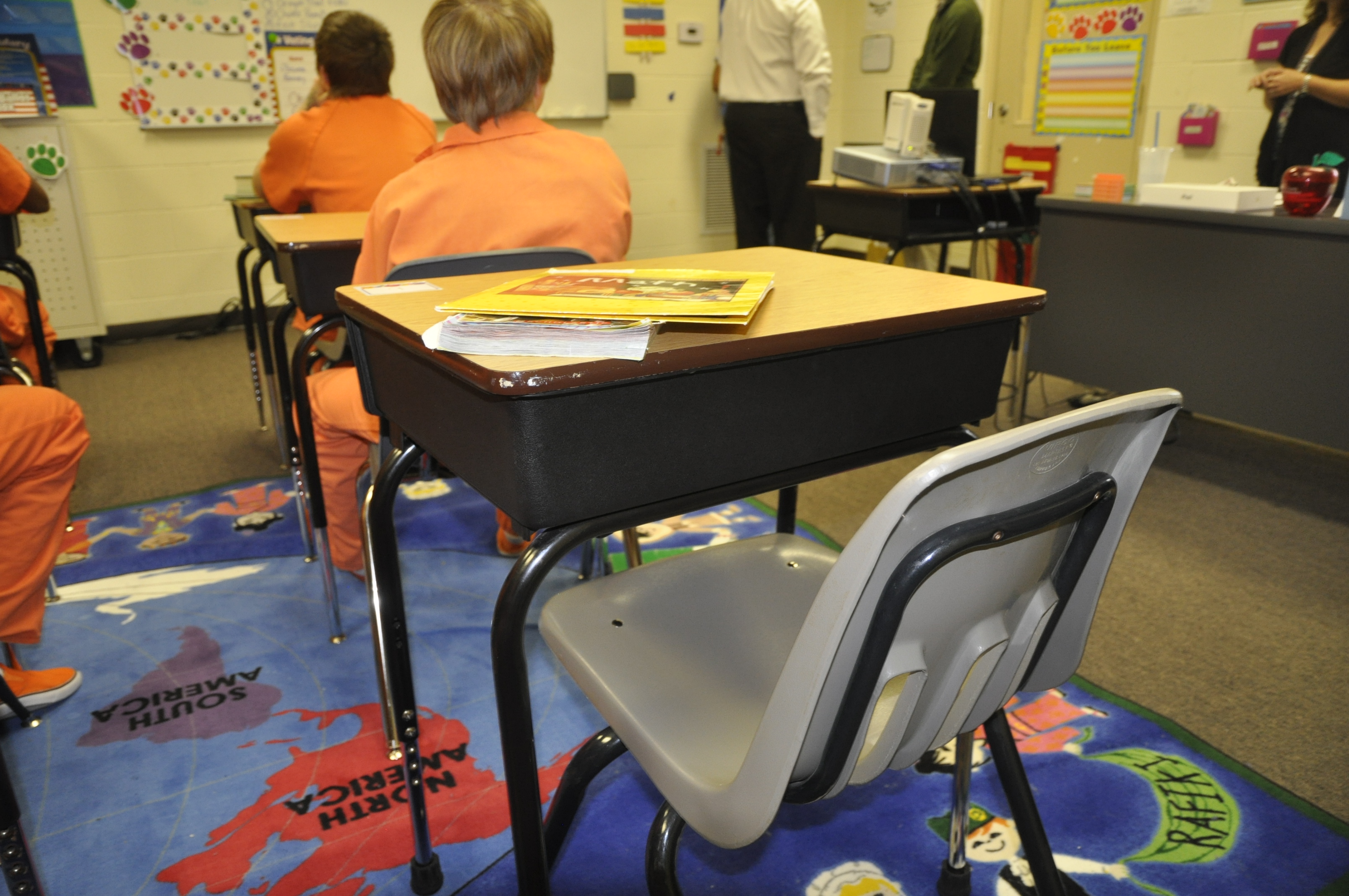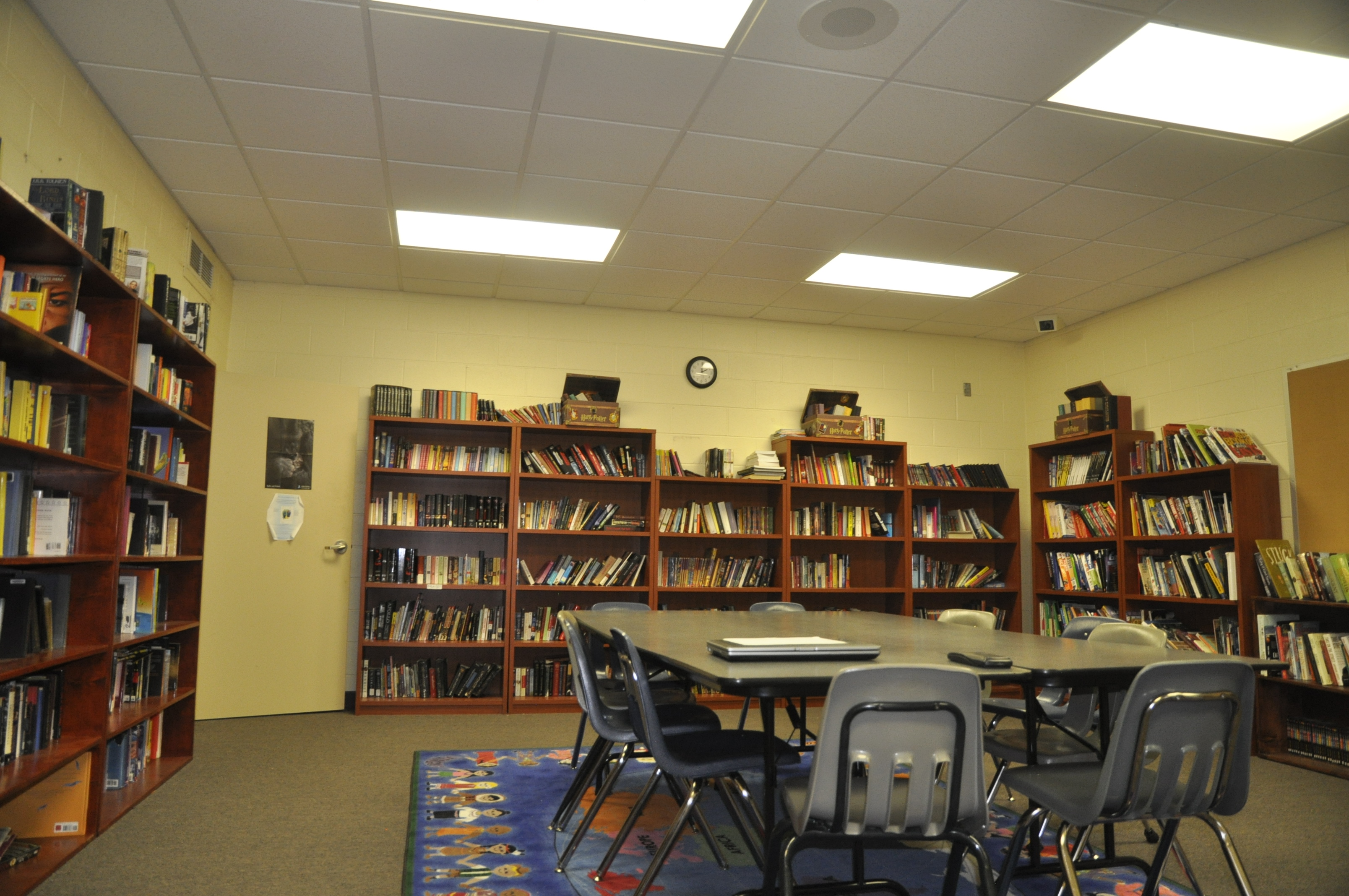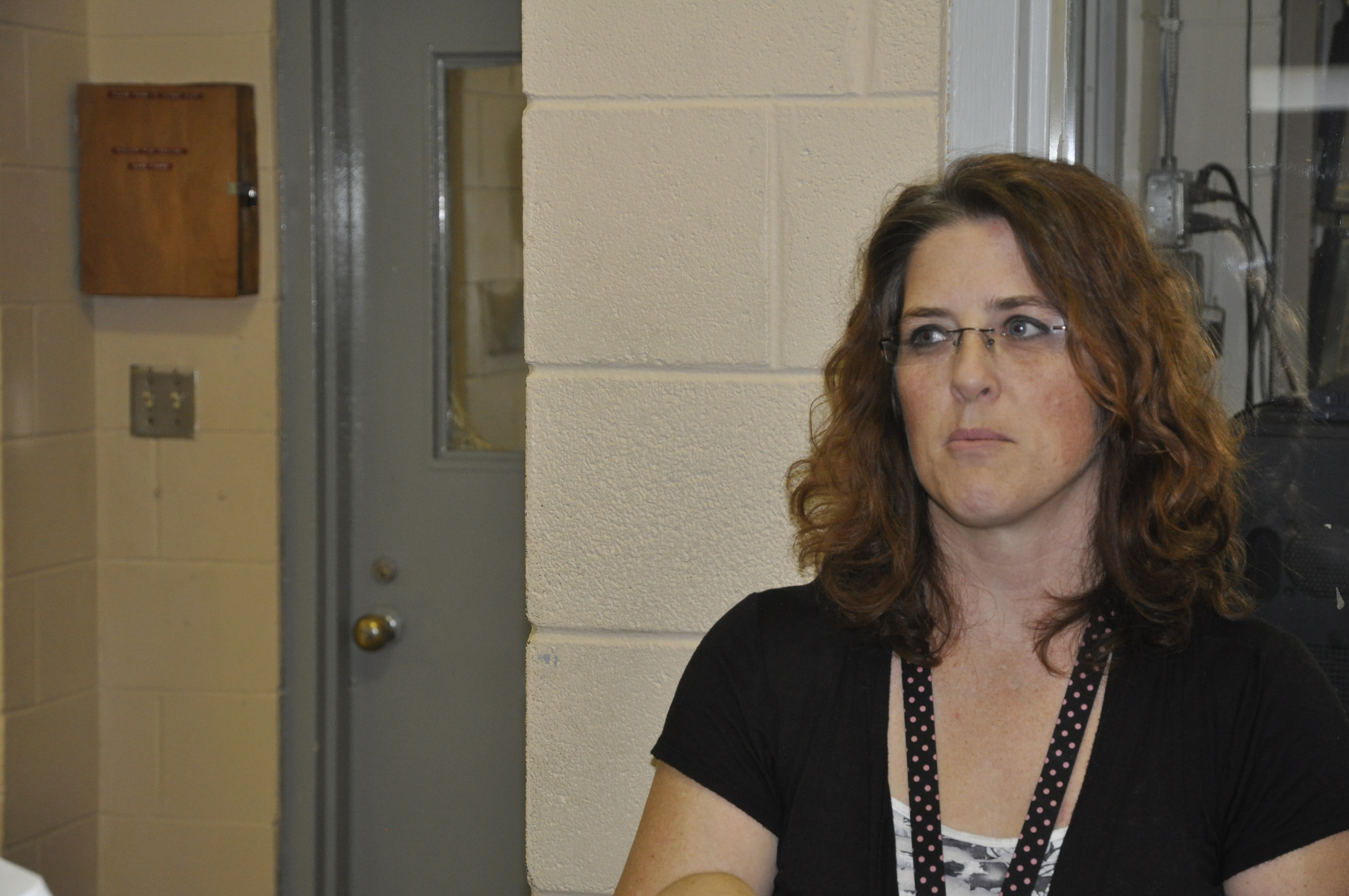 ANNISTON, Ala. — Mercy Pilkington’s classroom (pictured left), at first glance, seems like any other in the nation’s public school system. Novels penned by John Steinbeck and Harper Lee are stacked over a U-shaped row of cubicles. The walls are lined with laminated posters; crayon-colored cutouts of chubby red robins and lime-green pigs are pasted on the room’s sole window.
ANNISTON, Ala. — Mercy Pilkington’s classroom (pictured left), at first glance, seems like any other in the nation’s public school system. Novels penned by John Steinbeck and Harper Lee are stacked over a U-shaped row of cubicles. The walls are lined with laminated posters; crayon-colored cutouts of chubby red robins and lime-green pigs are pasted on the room’s sole window.
Pilkington, 39, has taught for 11 years. For the last six, she’s been an English instructor at Coosa Valley Youth Services (CVYS), a facility for juvenile offenders in this northeast Alabama city tucked in the foothills of the Appalachians. After years of distress from discarding her students’ writing after they left the facility, Pilkington decided to give her students — both former and current — the ability to share their writing with the world at large through a blog called “Writers on the Inside.”
The blog gives students access to their essays, poetry and stories long after they leave CVYS, Pilkington said. “When you’re not here, you can call up this website and there’s the story that you wrote,” she tells her students.
On this day, Pilkington’s classroom is primarily an audience of young boys, all clad in neon-orange jumpers, a reminder that this is no ordinary school. She carries a chemical restraint canister at her hip, and a personal alarm is tethered to her keychain. Still, through six years at CVYS, she said she’s never had to use the chemical restraint, and used the alarm only once — when one of her students experienced a seizure in class.
Although Pilkington has worked with several young people that came from “good homes,” the majority of her students have extensive histories of abuse and neglect, she said.
“If you live in a home where your stepfather rapes you,” she said, “or you live in a house where you come home everyday wondering if your mom is there — let alone if she’s sober — it’s not going to turn out well.”
She added: “People need to understand society created these kids. We turn them into the things they end up being.”
“There Are A Lot of Us Interested In What They Have To Say”
Pilkington’s program is not the only one of its kind in the United States.
David Inocencio, co-founder and director of The Beat Within, a San Francisco-based magazine that features essays and stories written by juvenile detainees, says creative writing can definitely be a therapeutic process for young people in the nation’s juvenile justice system.
“You’re going to get a young person that’s carrying a lot of baggage to put the baggage in thoughts on paper,” he said. “They’re going to get this amazingly thoughtful writing that speaks to a young person wanting to see a better life for him or herself.”
Inocencio started publishing the magazine in 1996. For the last 17 years, he’s held writing workshops inside juvenile halls across California. Currently, The Beat Within personnel serve more than 5,000 young people in California, and conduct multiple workshops across the nation, including programs in Arizona, Texas and Washington, D.C.
Making writing a habit for young people, Inocencio stated, is a tremendous platform for young people to express themselves and air their concerns about the environments they inhabit.
“We encourage the young people to keep on writing no matter where they go,” he said. “Whether it’s penitentiary, rehab, a group home or back into their communities — that they keep writing to tell their story.”
Inocencio said writing programs like The Beat Within allow a population without a voice to speak up. The effects, he believes, also prove positive for adults within the juvenile justice field, as it gives attorneys, service workers and judges greater insight into the lives of young offenders.
“We’re able to get a window in the world of this young person,” he said. “In the end, when you read the publication, reading what these young people have to say through the workshops, you’re seeing what’s broken.”
He also believes writing workshops allow young people to develop trust for adults. “There are a lot of us interested in what they have to say,” he said.
The benefits of implementing creative writing programs in juvenile detention facilities are apparent, Inocencio said. “Seeing your writing, knowing that it’s going nationwide and read by folks in Washington, D.C., Alabama, Hawaii — it empowers a young person.”
Creative writing not only changes a young person’s conceptualization of self, but also alters his or her life goals, Inocencio believes.
“It also helps the young writer realize that there’s more to his or her life than what got him or her in the system in the first place,” he said. “I don’t have to stay in the path of destruction [and I] do have the tools to get a high school diploma, or go on to higher education. Or that I am bigger than the label that has been placed on me.”
“I’ve Had Some Really Surprising Stories”

The Writers on the Inside entries consist primarily of in-class assignments, which, once redacted, are uploaded to the blog. “The students can’t use people’s names or their hometown,” she said. Additional safeguards ensure blog visitors cannot contact students, and students are not allowed to respond to comments posted on their entries. One of Pilkington’s greatest concerns is that individuals involved in some of her students’ charges may leave hateful or intimidating messages on the blog. She remedies this by setting the blog so all comments have to be pre-approved by her before being visible to visitors to the site.
“Almost everything that’s been put up there has been free writing,” she notes. “If you’ve got something in mind you want to write,” she frequently tells her students, “you’re more than welcome to.”
She said many times, her students just want someone to know what’s happened to them — to have someone believe their accounts.
“It’s like they have this urge to get out and say, ‘Hey, this is what happened to me,’” she said. “I’ve had some really surprising stories.”
In one essay, titled “This is My Life,” one of Pilkington’s students reflects upon a long history of abuse suffered at the hands of her parents.
“When I hear somebody talking about how bad their life is just because they have a ‘fight’ with their parents, I get really mad.
“My real dad tried to kill me and now I’ll always have that big ugly scar on my stomach to remember it by. By the time I was seven my mom was a stripper/prostitute; she would do anything in order to get money for her drug addiction. Even if that meant selling her own daughter to grown men for support of it.”
Another essayist writes:
“I have had a terrible life. My biological dad was in jail when my biological mother died, but he had two choices. 1. Find somebody to take care of me or 2. Put me in Foster Care.
“He decided to pick neither. Instead he tried to sell me and my other brother. My brother had some mental issues. He tried to kill me twice. Each time he had tried to drown me.”
Pilkington said although many of her students write about their own experiences, an equal number would prefer writing about more fantastical subjects. “I’ve gotten just as many that will not write about their personal life,” she said. “They want to write fiction short-stories.”
One of her students wrote of a fictitious inmate receiving a lethal injection, while others wrote about high school baseball stardom, earning their driver’s licenses and going fishing with explosives. The theme of guilt and punishment is common, even when the young writers dwell upon made-up worlds.
“As he left the scene of the crime, Victor was bawling,” begins one short story, titled “The Cry of Goodbye,” by a resident named J.F.
“He couldn’t believe his father had murdered that young boy.
“Victor had paid for the fine and the cars, but he new he could never pay for the little boy’s life. Victor had went to the little boy’s house so he could apologize to the little boy’s parents. The little boy’s parents were very happy that he had apologized.”
“If You Like To Write, Or You’ve Got Something To Say, You Do It”
Pilkington said she was initially surprised the CVYS administration wanted to start the program — an idea she said was green-lit following an informal parking lot conversation.
“There are great facilities out there; there are some horrible facilities out there,“ she said. “And this happens to be one of the good ones that really cares a lot about what happens to kids.”
Pilkington (pictured right) said, gauging from their reactions to comments posted on her blog, her students believe they have something “worth saying” and something “that people want to know about.” During classes, she said she’s shown her students how to set up a blog, and demonstrated how she can update the site through smart phones and other mobile devices.
her blog, her students believe they have something “worth saying” and something “that people want to know about.” During classes, she said she’s shown her students how to set up a blog, and demonstrated how she can update the site through smart phones and other mobile devices.
“If you like to write, or you’ve got something to say, you do it,” she said. “You don’t worry about what other people think about it or if just two people read it today. It’s your site.”
At the facility, Pilkington said some of her students have to write their essays using felt tip markers.
“I’m a writer myself, and I can’t imagine having to write my story onnotebook paper with a magic marker,” she said.
Her students’ desire to write, even when having to resort to unconventional implements, demonstrates an emotional need to get their stories out, she believes. In some instances, Pilkington said, her students’ work is barely legible.
“We go through every single word and fix it to make it readable,” she said. “We sit there, and word for word, put a comma here, capitalize this.”
Pilkington said her intent with the blog is multifaceted, but at the end of the day, she just wants visitors to realize many of her pupils have a knack for the written word.
“I want people to read it,” she said, “and go, ‘Wow, the 15-year-old burglary suspect actually can write a decent story.’”
Photos by Ryan Schill.































